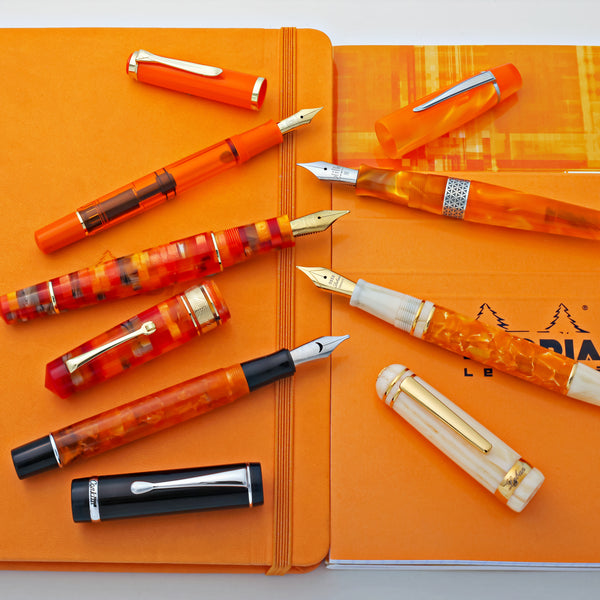Choosing Your Fountain Pen Nib
By now, you already know that the nib is the heart of your fountain pen. What you might not know is that the type of nib you use will depend on your writing style, and your preferences may change over time. In general, the best fountain pen nib size for beginners is fine or extra-fine, as their line width is similar to a ballpoint or gel pen. As you become more accustomed to using fountain pens, discovering the best way to store fountain pens becomes just as important as selecting the right nib, ensuring the longevity and performance of your pen.
Let's take a closer look at the three fountain pen nib sizes.
Fine Nibs
These produce a thin line that is suitable for smaller, more deliberate writing styles. Fine nibs work best on high-quality paper where the ink can flow smoothly without feathering. If you naturally have neater handwriting and like a calligraphy style, a fine nib might work well for you.
Extra-Fine Nibs
Extra-fine nibs are great if you write small, neatly, and not necessarily in large amounts. Because the tip of this nib is so delicate, you might experience some scratchiness on the paper. Extra-fine nibs use the least ink, so they dry faster and are less likely to smear. Both fine and extra-fine nibs are adaptable to various types of paper, making them ideal for beginners.
Medium Nibs
Most fountain pens use a medium nib size by default, but most offer other choices. A higher flow of ink onto the page means a higher probability of show-through, so you shouldn't use cheap paper with this nib. Medium nibs are ideal for signatures and writing for extended periods of time, as they do not require much pressure to write with.
Broad Nibs
Characterized by a wider writing tip, broad nibs allow for thicker lines and greater ink flow. This means they lay down more ink on paper, resulting in a smoother (and wetter) writing experience. Broad nibs create distinctive lines that are visually striking, enhancing the sheen properties of fountain pen ink. If you like bold and expressive writing and can invest in fountain pen-friendly paper to prevent bleed-through, the dramatic broad nib may be for you.





